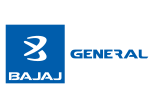Corporate NPS: National Pension Scheme Details & Benefits
Corporate National Pension Scheme is an extension of the National Pension Scheme introduced by the Pension Fund Regulatory and Development Authority in December 2011. It is an initiative undertaken by the government to offer everyone a chance to aim for long-term financial security. With Corporate NPS, one can accumulate a corpus of funds on a long-term basis, allowing them to earn a stable income during retirement.
Table of Contents
Features and Benefits of Corporate National Pension Scheme
Here are some of the features and benefits of the Corporate National Pension Scheme:
- Tax-saving Investment- Corporate NPS is a tax-saving investment. Under Section 80CCD (1) of the Income Tax Act, 1961, you are eligible for Corporate NPS tax exemptions. Employer’s contribution towards NPS, up to 10% of salary (Basic salary + Dearness Allowance), is eligible for tax deduction.
- Better Returns- The Corporate NPS investment can split the corpus between four types of market-linked investment. One can use a Corporate NPS calculator to estimate returns. The ROI is not distributed in the form of bonuses or dividends but accumulated over time.

- Flexibility- Corporate NPS offers complete portability, i.e., the CNPS account is unique and transferrable across employment, location/geography.
- Low-cost Scheme- The CNPS has one of the lowest expense ratios for a managed fund (fund management fees). It serves as a savings tool that can generate considerable growth through long-term investment.
- Efficient grievance management- CNPS allows grievance management through Centralized Grievance Management System (CGMS), CRA website, call centres, email or postal mail.
Eligibility Criteria for Corporate NPS
To be eligible for CNPS:
- You must be an Indian citizen
- You should be between 18 years to 60 years of age
- You should be an employee of an entity registered under the NPS- Corporate Model.
The type of entities that can register under or join the NPS Corporate Model
- Entities registered under the Co-operative Acts
- Entities registered under the Companies Act
- State Public Sector Enterprises
- Central Public Sector Enterprises
- Registered Limited Liability Partnerships
- Entities incorporated under Parliament Legislature or State Legislature
- Entities incorporated by order of the Central Government or State Government
- Societies & Trusts
- Proprietorship Concern
Types of Accounts under CNPS
The different types of CNPS accounts are:
-
Tier I
The employee can invest through their employer or independently. Essentially, this creates savings for retirement and is non-withdrawable until retirement.
-
Tier II
A Tier II account is a voluntary savings account. The withdrawal is subject to their minimum contribution and the account’s balance. No tax exemptions are available to the contributions/gains in the Tier II account.
Note- There is no separate Annual Maintenance Charge (AMC) for Tier II accounts. Tier-II account can be activated along with the Tier-I account or at a later date.
NPS allows flexible contributions from employer and employee:
- Equal contributions by employer and employee
- Unequal contributions by the employer and the employee
- Contribution from either the employer or the employee
Tax Benefits Under CNPS
Under Section 80C and Section 80CCD of the Income Tax Act, 1961, you can be entitled to tax benefits and exemptions if you invest in Corporate NPS. Contributions made by the employer on behalf of the NPS subscriber are tax deductible subject to the following:
- Up to 10% of the salary (Basic Salary + Dearness Allowance).
- With regard to the retrial contributions made by the employer towards Superannuation Fund, Provident Fund and NPS, the total deductions for all such contributions are capped at ₹7.50 Lakh per annum.
The employee can also claim a tax deduction on an additional self-contribution of up to ₹50,000 under Section 80CCD (1B) of the Income Tax Act, 1961.
Note: The above-mentioned tax deductions under various sections of the Income Tax Act are exclusive of each other.
Investment Options under CNPS
- Active Choice
Here, there are options to decide on the allocation of funds across actively -
- Corporate Bonds: Funds are invested in fixed-income debt securities.
- Equity: This is a high-risk investment option, and one can invest up to 75% in this asset class.
- Alternate Assets: The maximum capping of this asset class is 5% of the total funds, and funds are invested in infrastructure or real estate.
- Government Securities: Your funds are invested in debt instruments that belong to a sovereign government. You may invest 100% of your funds in this asset class.
- Auto Choice
The proportion of funds is invested across three asset classes (Equity, Corporate Bonds & Government Securities) in a predetermined asset class allocation pattern depending on the age. Following are the 03 Life Cycle Funds:
- LC 75 - Aggressive Life Cycle Fund
- LC 50 - Moderate Life Cycle Fund
- LC 25 - Conservative Life Cycle Fund
The detailed table is shown below as per the PFRDA under the NPS- Corporate model Investment Choices section-
|
Age |
Aggressive Life Cycle Fund (LC-75) |
Moderate Life Cycle Fund (LC-50) |
Conservative Life Cycle Fund (LC-25) |
||||||
|
Asset Class (%) |
Asset Class (%) |
Asset Class(%) |
|||||||
|
E |
C |
G |
E |
C |
G |
E |
C |
G |
|
|
Up to 35 years |
75 |
10 |
15 |
50 |
30 |
20 |
25 |
45 |
30 |
|
Up to 36 years |
71 |
11 |
18 |
48 |
29 |
23 |
24 |
43 |
33 |
|
Up to 37 years |
67 |
12 |
21 |
46 |
28 |
26 |
23 |
41 |
36 |
|
Up to 38 years |
63 |
13 |
24 |
44 |
27 |
29 |
22 |
39 |
39 |
|
Up to 39 years |
59 |
14 |
27 |
42 |
26 |
32 |
21 |
37 |
42 |
|
Up to 40 years |
55 |
15 |
30 |
40 |
25 |
35 |
20 |
35 |
45 |
|
Up to 41 years |
51 |
16 |
33 |
38 |
24 |
38 |
19 |
33 |
48 |
|
Up to 42 years |
47 |
17 |
36 |
36 |
23 |
41 |
18 |
31 |
51 |
|
Up to 43 years |
43 |
18 |
39 |
34 |
22 |
44 |
17 |
29 |
54 |
|
Up to 44 years |
39 |
19 |
42 |
32 |
21 |
47 |
16 |
27 |
57 |
|
Up to 45 years |
35 |
20 |
45 |
30 |
20 |
50 |
15 |
25 |
60 |
|
Up to 46 years |
32 |
20 |
48 |
28 |
19 |
53 |
14 |
23 |
63 |
|
Up to 47 years |
29 |
20 |
51 |
26 |
18 |
56 |
13 |
21 |
66 |
|
Up to 48 years |
26 |
20 |
54 |
24 |
17 |
59 |
12 |
19 |
69 |
|
Up to 49 years |
23 |
20 |
57 |
22 |
16 |
62 |
11 |
17 |
72 |
|
Up to 50 years |
20 |
20 |
60 |
20 |
15 |
65 |
10 |
15 |
75 |
|
Up to 51 years |
19 |
18 |
63 |
18 |
14 |
68 |
9 |
13 |
78 |
|
Up to 52 years |
18 |
16 |
66 |
16 |
13 |
71 |
8 |
11 |
81 |
|
Up to 53 years |
17 |
14 |
69 |
14 |
12 |
74 |
7 |
9 |
84 |
|
Up to 54 years |
16 |
12 |
72 |
12 |
11 |
77 |
6 |
7 |
87 |
|
Up to 55 years |
15 |
10 |
75 |
10 |
10 |
80 |
5 |
5 |
90 |
CNPS Withdrawal Rules and Regulations
- You can withdraw up to 60% as a lump sum at the age of 60
- The remaining 40% will be converted to annuities
- Note: Under special circumstances such as medical emergencies, marriage expenses, education of children or construction of a house, you may be allowed to withdraw up to 25% of the total funds after completion of at least 3 years.
Conclusion
The CNPS is a valuable initiative introduced by the government to provide individuals to secure long-term financial stability with several benefits, including tax-saving investments, flexibility and low costs. Contributions from employers and employees can be made flexibly, and tax benefits can be availed under Section 80C and Section 80CCD of the Income Tax Act. Withdrawal rules permit individuals to access a portion of their funds at retirement age and also offer provisions for special circumstances. Overall, CNPS is an opportunity for individuals to secure a stable income during their retirement years.
Frequently Asked Questions
Q1- Which are the intermediaries under NPS architecture?
- NPS Trust
- Central Recordkeeping Agency (CRA).
- Pension Funds (PFs)
- Trustee Bank
- Annuity Service Providers (ASPs)
- Point of Presence (POP)
Q2- What are the minimum contributions to Tier I and Tier II account?
- Minimum Contributions (For Tier-I)
Minimum amount per contribution - Rs 500
Minimum contribution per year - Rs 1,000
Minimum number of contributions – One/year
- Minimum Contributions (For Tier-II)
At the time of activation - Rs 1000
Subsequent contributions - Rs 250
Q3- What benefits would a family of an employee get when the employee covered under NPS expires during the service?
- In such an unfortunate event, the nominee will receive 100% of the NPS pension wealth in a lump sum.
Q4-Which forms are required for registration of employees and employers in the NPS- Corporate model?
- There is a separate form for the registration of employees and employers. Form CHO-1 is for corporate registration, and form CS-S1 is for employee registration.
Q5- Whether Nomination facility is available under NPS-Corporate Model?
- Yes, Nomination can be made by the employee.




























